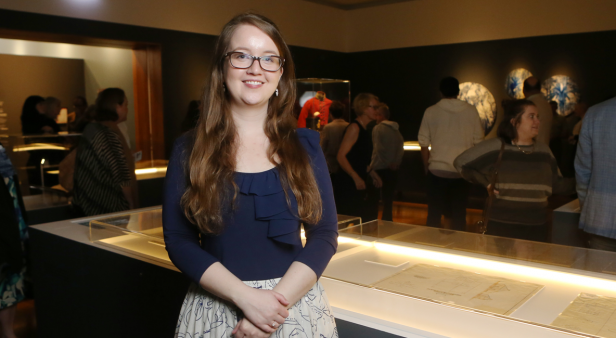We’d life to kick things off by getting to know a bit about you! What was it that inspired you to pursue a career in contemporary art and museum studies?
I’ve always loved history and culture, and I find people fascinating, but I actually have a background in music and sound production. When I started working with museums and galleries, I found that composing music and composing an artwork are not that different – they all follow the same creative process, but with a different outcome. We’re all artists.
You’ve been working with Museum of Brisbane since 2012 – what do you love most about the Museum and the work it does?
I love working on such a wide range of exhibitions. The Museum has exhibitions covering social history, fashion, design, traditional and contemporary art, so there is always something exciting to learn and new people to meet. Brisbane has a fascinating history and a unique culture, and sharing this is so important.
Life In Irons is an amazing and informative exhibition! For those that haven’t had a chance to check it out, how would you describe its subject matter and focus?
The exhibition features the original documents, maps and registers from the Moreton Bay Penal Colony, listed on the UNESCO Memory of the World Register, which also lists the Magna Carta and Anne Frank’s diary. To provide some context and to bring these documents to life, we have incorporated contemporary artworks, uniforms, and interactive technologies. You can choose a character as you enter Life in Irons based on a real convict and follow their story throughout the exhibition. Every time you come back to visit, you can choose a new character and have a different experience every time.
What inspired you and Museum of Brisbane’s team to investigate this specific period of Brisbane’s past?
It’s a difficult period in Brisbane’s history – for the convicts, the officers, and the Aboriginal people. But it is important that we share this history as it has shaped who we are today as a city. Never forget the past, learn from it.
How did you go about collating the original documents, accounts and artwork from this period?
The documents are cared for by Queensland State Archives, and we worked closely with their team to collate and prepare the documents. We then approached artists and historians to help us interpret them.
Is there a particular piece that you think is a must-see in the exhibition?
The Book of Trials (1835-1842) is one of my favourites. It details the crimes that convicts committed while serving sentences at Moreton Bay. Absconding, taking off irons, refusing to work, and more serious crimes are documented with their sentences – 50 lashes, 100 lashes, 200 lashes!
The exhibition utilises immersive technology to tell the stories of some real-life characters. How did you uncover these individual stories?
We worked with historians Jennifer Harrison and Ray Kerkhove. They are incredible researchers and specialists in this period of Brisbane’s history, and helped us to uncover these thrilling personal stories. We turned them into first-person narratives that were illustrated and animated or spoken by voice actors.
During your time piecing together the exhibition, what was one discovery that you found most surprising?
We have a Marine Coatee from 1835–1850 (a redcoat from the British Army) on loan from a private collector. I was incredibly surprised at how tiny it is! We had to display it on a small, female mannequin. The officers in charge of the convicts were very young and very malnourished!
Ideally, what would you hope visitors take away from their experience at Life in Irons?
I hope visitors gain an understanding of what life would have been like at the Moreton Bay Penal Colony, not only for the convicts, but the officers, wives, Commandants, and of course, the thousands of Aboriginal people who were forcibly removed from their custodial land.
Finally, what are some words of wisdom that you live by?
There are three things you need in life – someone to love, something to do, something to look forward to.
Life In Irons will be running at the Museum of Brisbane until Sunday October 28.
